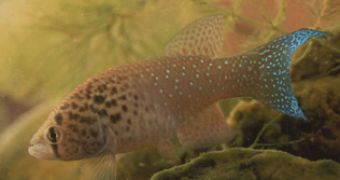There are organisms on Earth that can live without oxygen. Such is the case of archebacteria, that live in extreme environments that lack oxygen, like geysers, black smokers, oil wells, bottom of the lakes or oceans. They represent a basic stage, when the Earth lacked oxygen. Other organisms can live in anoxic environments (that lack oxygen), like gut parasites, but they come from ancestors that breathed oxygen.
Still, all vertebrates need oxygen - which they take from air or from water - to function. Even the highly trained humans cannot resist more than a few minutes without oxygen. The next best vertebrates, turtles and a type of goldfish can hold their breath for only a few days. But compare this with the tiny killifish (also called rivulines or live bearers), which can survive without oxygen for over 60 days (!), by far the longest survival time interval of any vertebrate.
The annual minute killifish (Austrofundulus limnaeus) is just 8 cm (3.2 inch) long and lives in temporary ponds in arid regions of Venezuela. Their embryos stand through seasonal droughts buried in mud, where microbial activity often consumes all the oxygen.
A team led by Jason Podrabsky, a comparative physiologist at Portland State University in Oregon, checked the ability of killifish embryos to resist anoxia (absence of oxygen) by sealing them in oxygen-free vials. After 62 days, 50 % the embryos recovered when given oxygen!
The researchers discovered that the surviving killifish embryos accumulated lactate very slowly, pointing that their anaerobic ability comes from an ability to cut their metabolic rate to extremely low levels. Lactate is the end product of anaerobic metabolism, that accumulates in our muscles when we make anaerobic effort, typical in body-building, inducing soreness and tiresome, accompanied by muscular fever. The team will now investigate which genes induce the metabolic slowing.
"Learning how the fish do this may help explain how human tissues respond to anoxia during, say, a heart attack," explained Podrabsky.

 14 DAY TRIAL //
14 DAY TRIAL //